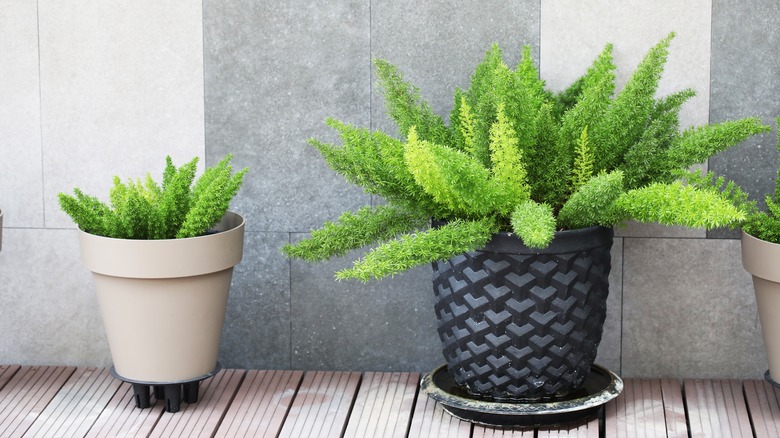The Fast-Growing Houseplant That Thrives Even In Low Light Conditions
Struggling to identify houseplants that will flourish under the low light conditions in your home? While a number of beautiful, fast-growing houseplants that thrive in low light are available, you may want to choose one that not only grows quickly but is also easy to care for, even for beginners. Asparagus fern (Asparagus densiflorus) is such a houseplant. Though it's one of the ferns that could make a perfect houseplant, it technically is not a fern but is in the Asparagaceae family.
This plant adapts easily to a variety of temperature, light, and moisture conditions. You might be surprised that asparagus fern thrives under low light because some of the 300 species of these ferns need significant light. However, this one does just fine even in deep shade, meaning daily direct sunlight ranging from less than two hours to zero hours.
For this delicate-looking plant, striking, feathery foliage is the star of the show, making asparagus fern desirable for flower arrangements and as a contrasting textural element with other indoor plants in a container or hanging basket. It can grow up to 3 feet tall indoors, and you can pinch back stem tips to keep the plant's height under control. From spring through fall, small and unremarkable white or pinkish-white blossoms appear but are later upstaged by bright red berries if the plant is pollinated. If berries appear under indoor conditions, keep them away from dogs and cats, as asparagus fern is toxic to these pets.
How to care for asparagus fern houseplants
You'll want to learn all the details you can about how to successfully grow an asparagus fern. To start, plant it in organically rich, moist soil. Asparagus fern's tuberous, water-storing roots mean that an occasional missed watering probably won't matter, but water regularly from spring to fall, cutting back in the winter. Pest issues to be aware of include slugs, mites, aphids, and mealybugs. Leaf spot and rot in roots or crown may occur, and you'll want to watch out for leaf drop if the soil dries out too much.
Remove old growth and debris in the spring. You can fertilize monthly, except in the winter. Rapid root growth means you may be repotting your asparagus fern regularly. The plant will regenerate even if cut it all the way back to the soil, so that's an option if you're unhappy with your plant's appearance. You can propagate asparagus fern by dividing it, but make sure it stays as in indoor plant. Asparagus fern is invasive in some areas of the U.S., including Florida, Texas, and Hawaii.

